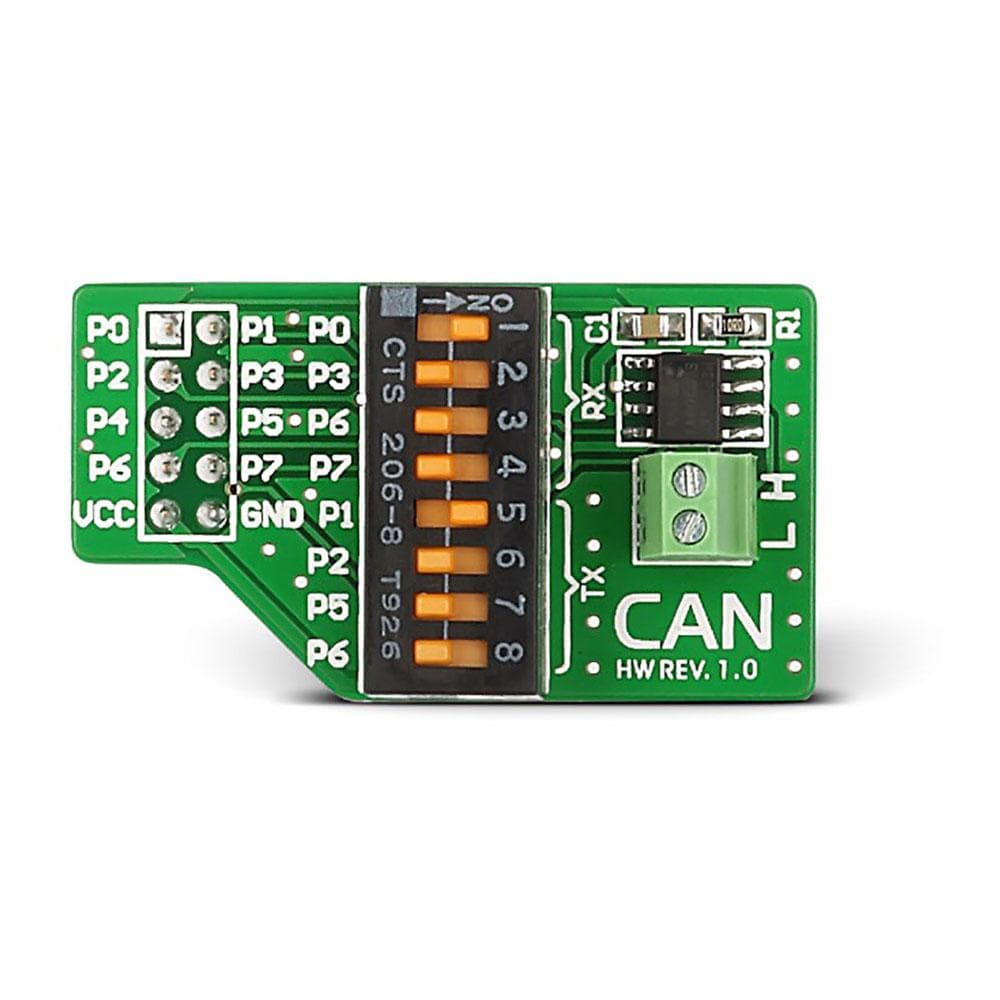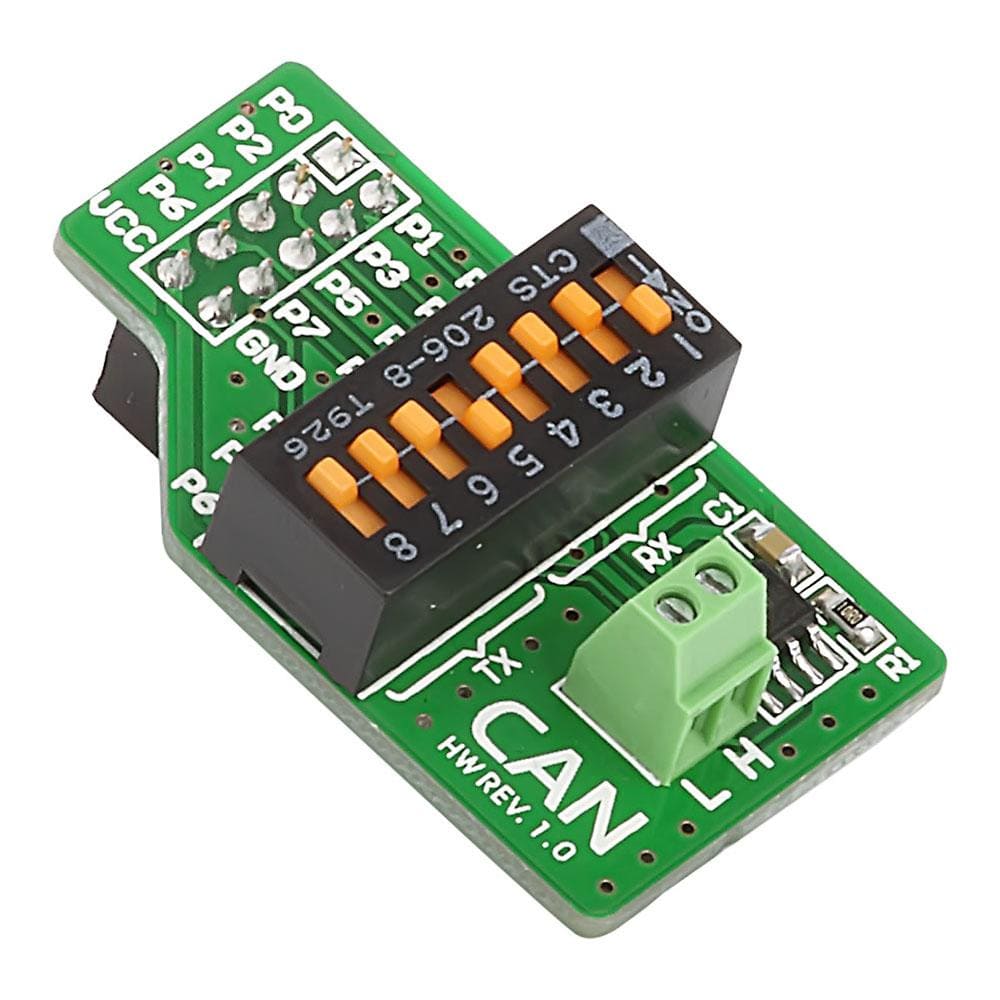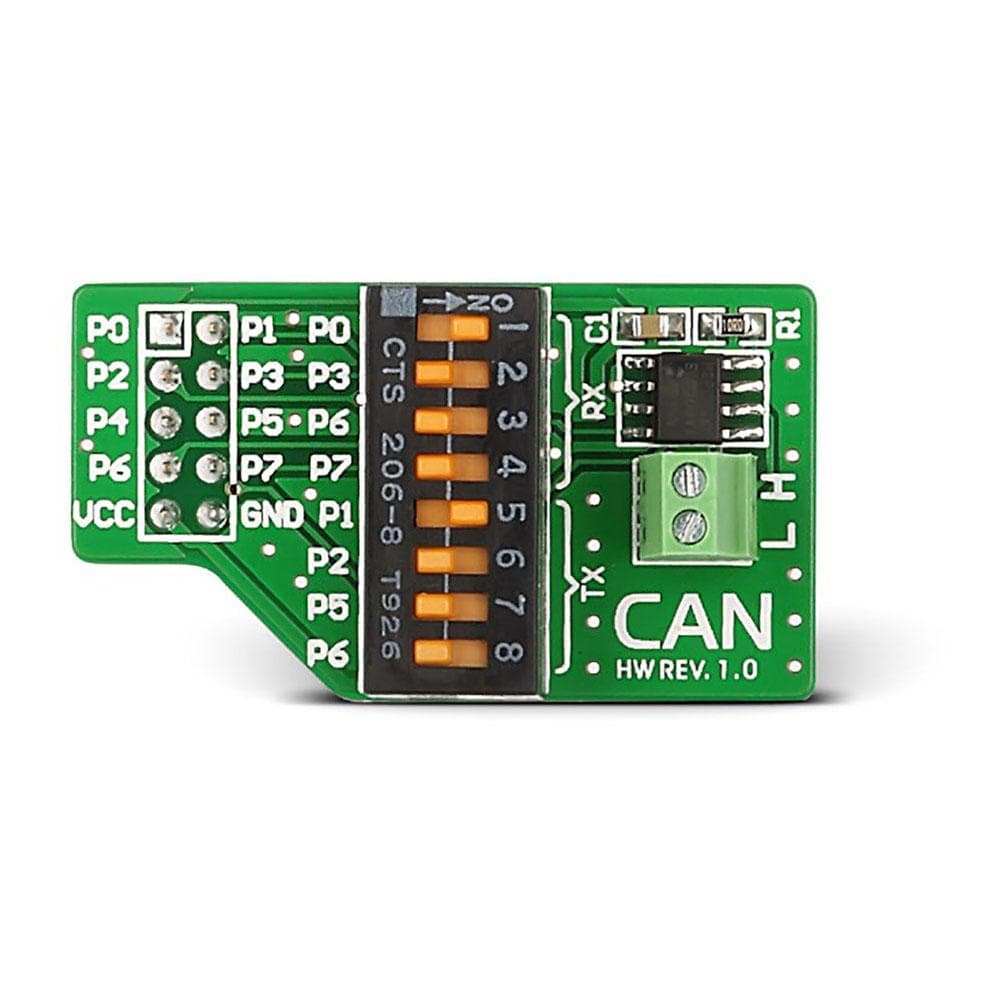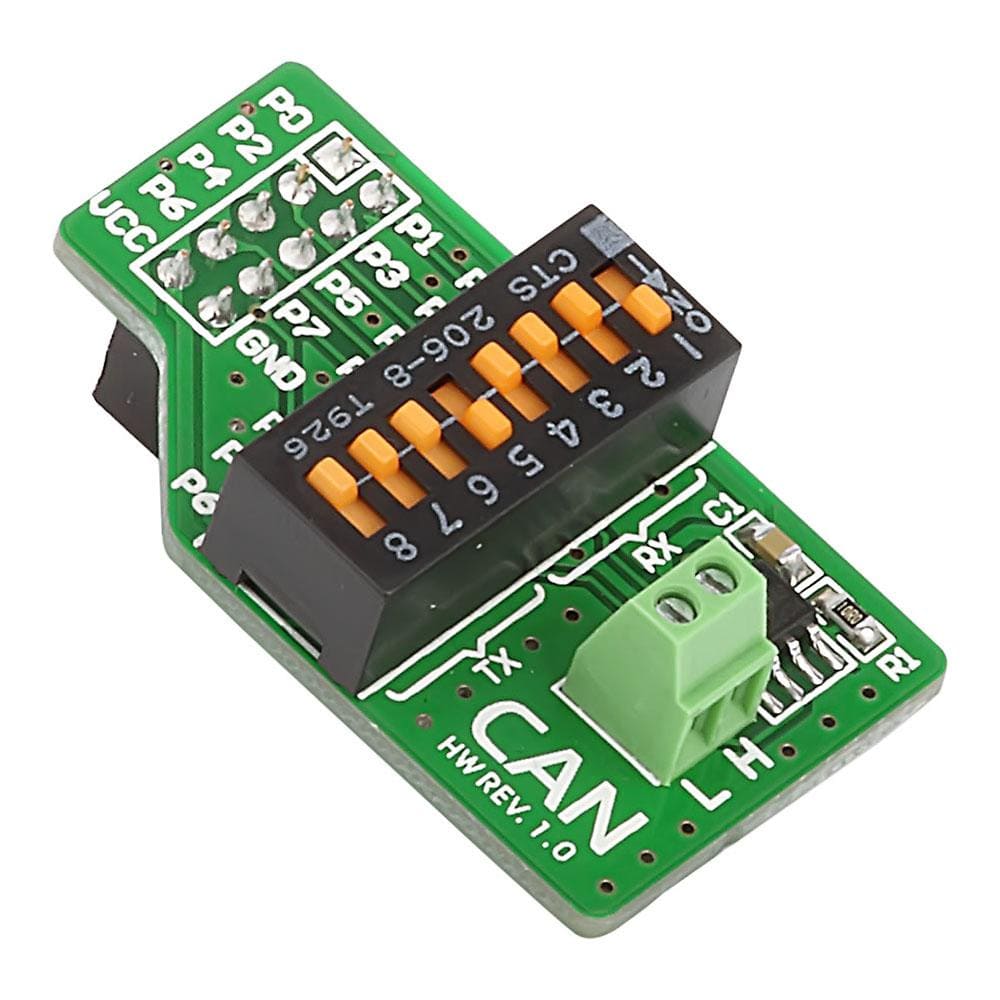

Overview
The CAN-1 Board is an accessory board that lets you add CAN (Controller Area Network) connectivity to the design. Developed with integrated CAN support, the board features a high-speed MCP2551 CAN transceiver that works as the interface between a CAN protocol controller and the physical bus. It operates at speeds of up to 1 Mb/s and is suitable for 12V and 24V systems. The CAN-1 Board implements ISO-11898 standard physical layer requirements. It allows up to 112 nodes to be connected. The board can be connected to a development system via a female IDC10 connector. The DIP switch facilitates the user to choose which pins are used for RX/TX. The CAN-1 board is designed to operate using a 5V power supply only. When connecting to a 3.3V development system, voltage translators are advisable.
The CAN-1 board is an ideal option for industrial automation, home automation, automotive and mobile machine industry, and many more.
Downloads
Die CAN-1-Platine ist eine Zubehörplatine, mit der Sie dem Design CAN-Konnektivität (Controller Area Network) hinzufügen können. Die Platine wurde mit integrierter CAN-Unterstützung entwickelt und verfügt über einen Hochgeschwindigkeits-CAN-Transceiver MCP2551, der als Schnittstelle zwischen einem CAN-Protokoll-Controller und dem physischen Bus fungiert. Sie arbeitet mit Geschwindigkeiten von bis zu 1 Mb/s und ist für 12-V- und 24-V-Systeme geeignet. Die CAN-1-Platine implementiert die Anforderungen der physischen Schicht nach ISO-11898. Sie ermöglicht den Anschluss von bis zu 112 Knoten. Die Platine kann über einen weiblichen IDC10-Anschluss an ein Entwicklungssystem angeschlossen werden. Mit dem DIP-Schalter kann der Benutzer auswählen, welche Pins für RX/TX verwendet werden. Die CAN-1-Platine ist nur für den Betrieb mit einer 5-V-Stromversorgung ausgelegt. Beim Anschluss an ein 3,3-V-Entwicklungssystem sind Spannungswandler ratsam.
Die CAN-1-Platine ist eine ideale Option für die Industrieautomatisierung, Heimautomatisierung, die Automobil- und Mobilmaschinenindustrie und vieles mehr.
| General Information | |
|---|---|
Part Number (SKU) |
MIKROE-67
|
Manufacturer |
|
| Physical and Mechanical | |
Weight |
0.008 kg
|
| Other | |
Warranty |
|
HS Code Customs Tariff code
|
|
EAN |
8606015070421
|
Frequently Asked Questions
Have a Question?
Be the first to ask a question about this.


